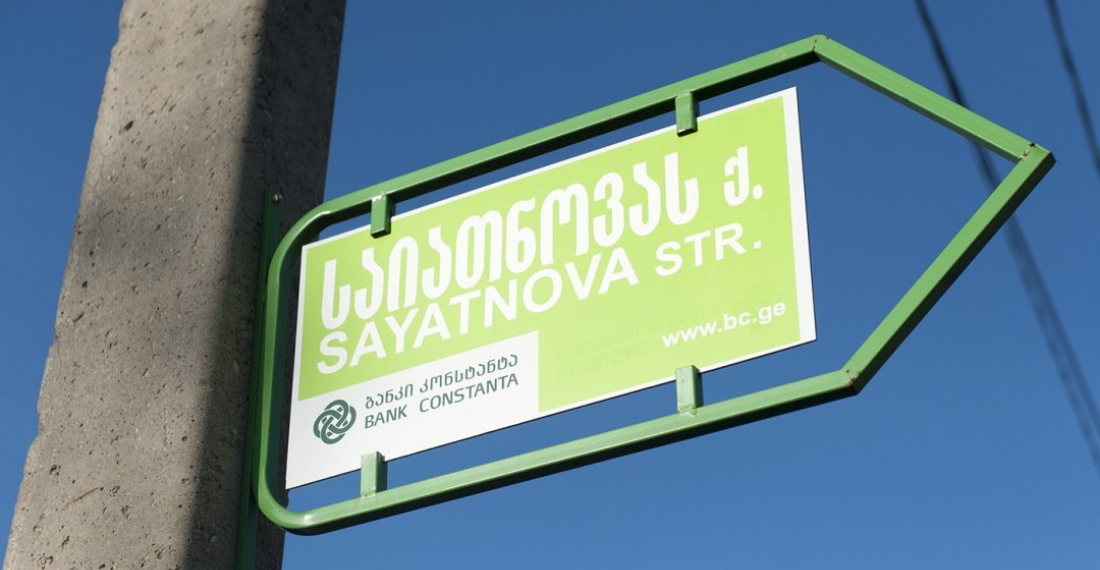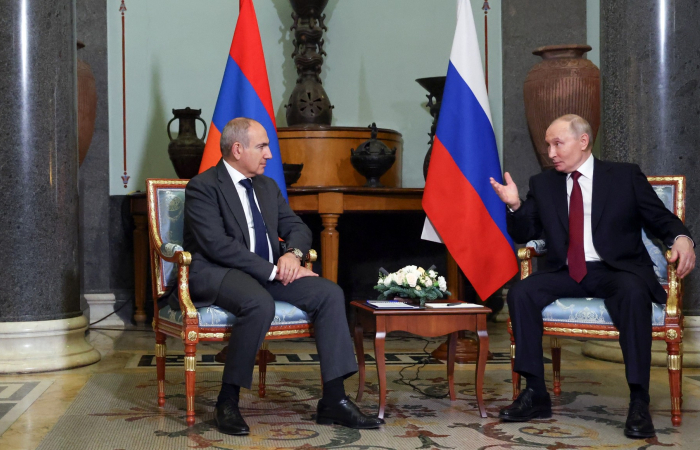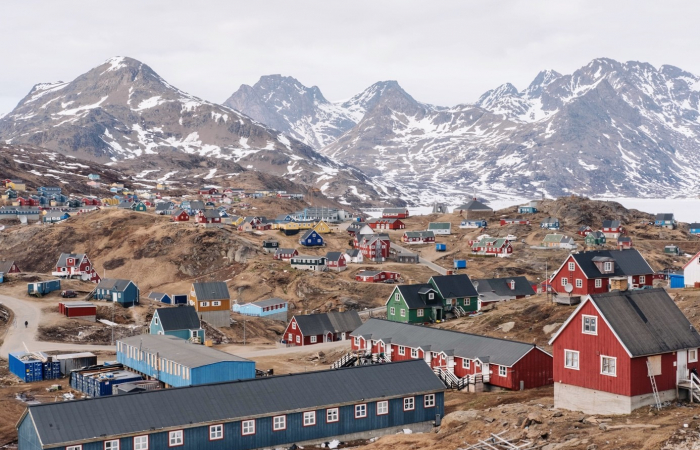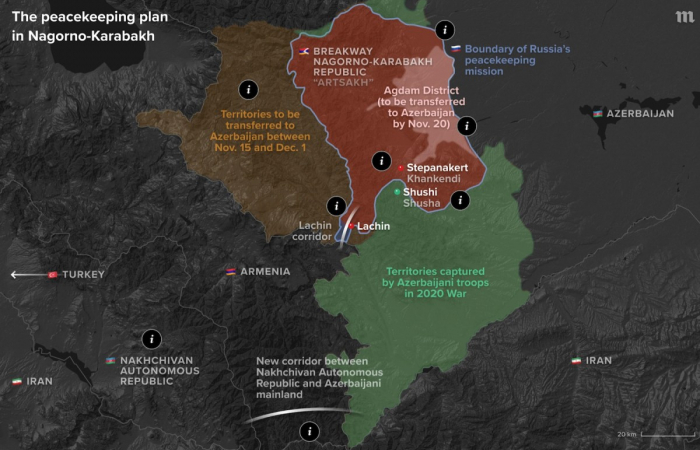In this op-ed for commonspace.eu, Onnik James Krikorian writes that culture can play a critical role in the Armenia-Azerbaijan peace-building process. "It can provide positive examples of coexistence and demonstrate how Armenians and Azerbaijanis share similarities despite dominant nationalist narratives that suggest otherwise. Acknowledging and respecting cultural differences could be instrumental in promoting peace and resolving conflicts."
While culture may not initially appear to be a critical area of focus for conflict resolution practitioners engaged in activities to resolve the Armenia-Azerbaijan conflict, it is nonetheless important to consider. Although there have been some precedents of cultural initiatives, there are also potential risks involved. Shared or similar traditions, including in cuisine and music, invariably lead to mutual accusations of cultural misappropriation and theft.
Yet culture plays a critical role in shaping people's perspectives, interactions, beliefs, values, and customs, which ultimately influence their perceptions of conflict and violence. In addition, it can provide positive examples of coexistence and demonstrate how Armenians and Azerbaijanis share similarities despite dominant nationalist narratives that suggest otherwise. Acknowledging and respecting cultural differences could be instrumental in promoting peace and resolving conflicts.
Unfortunately, however, most attempts at dialogue remain in the political realms and usually involve analysts, researchers, and others who have fewer opportunities to impart any messages to the public when compared to those that can appeal to the public on a more emotional and inclusive level. This is especially the case in terms of reaching a younger audience – one that is often apathetic or even disengaged in domestic or international political processes.
While there have been some successful cultural intiatives, post-2020 there is an urgent need to resurrect such approaches
True, in the past two decades, there have been several cultural initiatives aimed at fostering peace and understanding between Armenia and Azerbaijan, but post-2020, there is an urgent need to resurrect such approaches again through joint concerts, art exhibitions, poetry readings, and music festivals, though nearly always in third countries such as Georgia.
And there were success stories. In 2010, for example, the Commonwealth of Independent States (CIS) Youth Symphony Orchestra, conducted by Vladimir Spivakov, performed in Baku and Yerevan and in each case were attended by the former culture ministers of Armenia and Azerbaijan in both locations – Armen Smbatyan and Polad Bulbuloglu. The latter, incidentally, is currently Azerbaijan’s Ambassador to Moscow.
The CIS Youth Orchestra came amid a number of other unprecedented events. In April the same year, the Catholicos of All Armenians, Karekin II visited Baku, performed a small service in the Armenian church in the centre of the city, and even met with President Ilham Aliyev. The following year, Allahshükür Pashazade, Grand Mufti of the Caucasus and Azerbaijan’s spiritual head, visited Yerevan in one of a few but rare direct flights between the two capitals.
Youth orchestras, jazz festivals and films
Russia might already be planning similar initiatives in the future so perhaps the European Union can consider supporting other efforts. The Tsinandali Festival in Georgia, for example, aims to promote "the language of music in the region, the crossroads of Europe and Asia", and was launched in September 2019. It is currently auditioning musicians for its Pan-Caucasian Youth Orchestra.
And for years the Kavkaz Jazz Festival in Tbilisi has also attracted musicians from Armenia and Azerbaijan as well as Turkey and beyond. Organised by Helen Mechitova, a Georgian citizen of ethnic Armenian origin related to photographer Yuri Mechitov best known for the iconic image of Sergey Parajanov in the streets of Tbilisi, cross-border jam sessions also took place.
Indeed, perhaps Parajanov, the ethnic Armenian filmmaking legend, already highlights the potential role of cross-cultural dialogue. Revered in Armenia for his Colour of Pomegranates cinematic epic about Sayat Nova, his last film was based on Lermontov’s tale of an Azerbaijani troubadour, Ashik Kerib, and was filmed in Baku even as the Sumgait programs occurred. A child of the South Caucasus, Parajanov made sure the music was composed by an Azerbaijani, Javanshir Guliyev. Meanwhile, the Azerbaijani Mugham cultural icon, Alim Qasimov, provided the vocals.
Sayat Nova
Sayat Nova is an Armenian cultural icon of huge importance. As Thomas de Waal told me in an interview I conducted in Yerevan in 2002:
"Sayat Nova wrote many of his songs in Azeri even though there’s this misconception among Armenians that Azerbaijan didn’t exist before the twentieth century. In fact, Sayat Nova wrote a lot of his songs in a language that’s now recognised as being Azerbaijani, it just wasn’t called that. It was called Turkish or whatever. However, it was Turkish of a Caucasian variety that wasn’t from Turkey."
But most people know only Sayat Nova’s Armenian-language work. Perhaps his Azerbaijani poems written need to be rediscovered and promoted. Incidentally, in the Georgian city of Marneuli, which itself is over 80 percent ethnic Azerbaijani with an ethnic Armenian and Georgian minority, a road is named in his honour.
This might not resonate among a younger population in the region, but there are also more contemporary examples. The One Caucasus Festival held in the village of Tserakvi in southern Georgia stands out. Armenian, Azerbaijani, and Georgian contemporary musicians including Baku’s Dihaj and Gyumri’s The Bambir have all taken part in the annual event where cross-border musical collaborations are also staged. The audience is largely local – many ethnic Azerbaijanis and some ethnic Armenians from nearby villages.
Rock, jazz, world, and traditional music all feature at the festival, as does a camping space, making it an ideal location for joint Armenia-Azerbaijan youth workshops in the future. And in Tbilisi there is also a shared stage for more extreme genres. The Wacken Metal Battle Caucasus annually features Armenian, Azerbaijani, and Georgian metal bands all competing with each other for a much sought after place at Wacken Open Air in Germany, one of the largest heavy metal festivals in the world.
Audiences for the competition staged in Tbilisi comprise Armenians, Azerbaijanis, and Georgians, as does the jury.
Despite risks, it is time to think out of the box
Needless to say, there are risks too. Here we can remember the late Armenian peacebuilder Georgi Vanyan whose attempts to showcase Azerbaijani culture in Yerevan and the regions of Armenia more than a decade ago were met with protests, disruption, and even violence. It is also true that it is unlikely that any attempts to stage Armenian cultural events in Azerbaijan are possible. At least for now.
But it is time to think out of the box. At a recent international organised event in Georgia, for example, a presentation on the use of social media to bring Armenia and Azerbaijan together noted that it would probably be useless to involve food bloggers in the peace process. I had to disagree. Given the endless ‘dolma wars’ on top of bickering over shared folk songs such as Sari Gelin, the similarities and slight differences between often shared cuisines can also represent how close and related they actually are while also adding particular national interpretations.
And as Azerbaijan celebrates Novruz this month, it is hard not to see the similarities with the Armenian festival of Trndez. Both usher in the spring and pre-date Christianity and Islam. As one saying attributed to an Azerbaijani writer, Ağarəhim, goes: “Dolma yeyənindi, Sarı Gəlin oxuyanındı” – “Dolma belongs to the one who eats it, Sarı Gelin to those that sing it.”
source: Onnik James Krikorian is a journalist, photojournalist, and consultant from the U.K. who has covered the Armenia-Azerbaijan conflict since 1994.
photo: Onnik James Krikorian
The views expressed in opinion pieces and commentaries do not necessarily reflect the position of commonspace.eu or its partners






